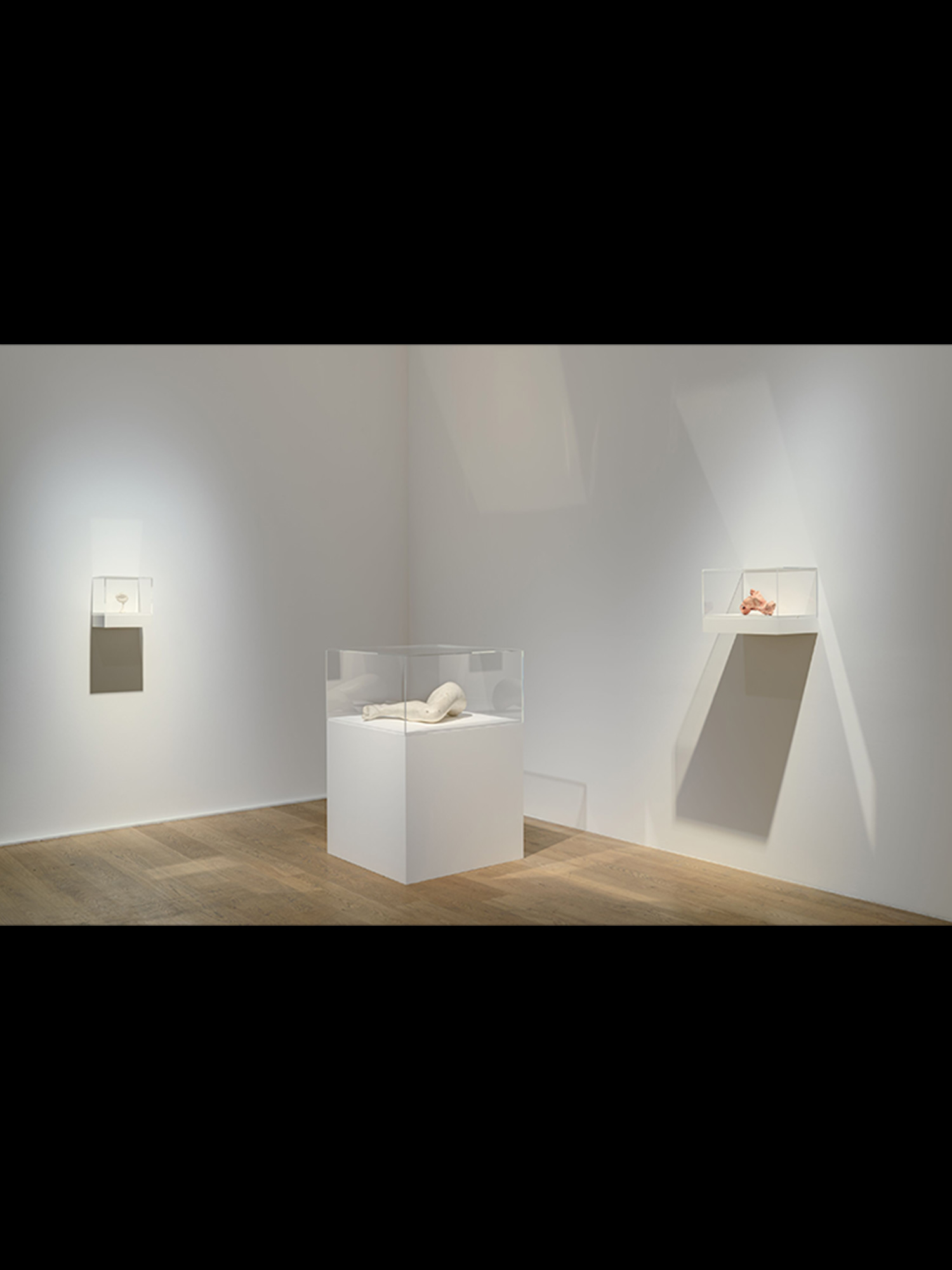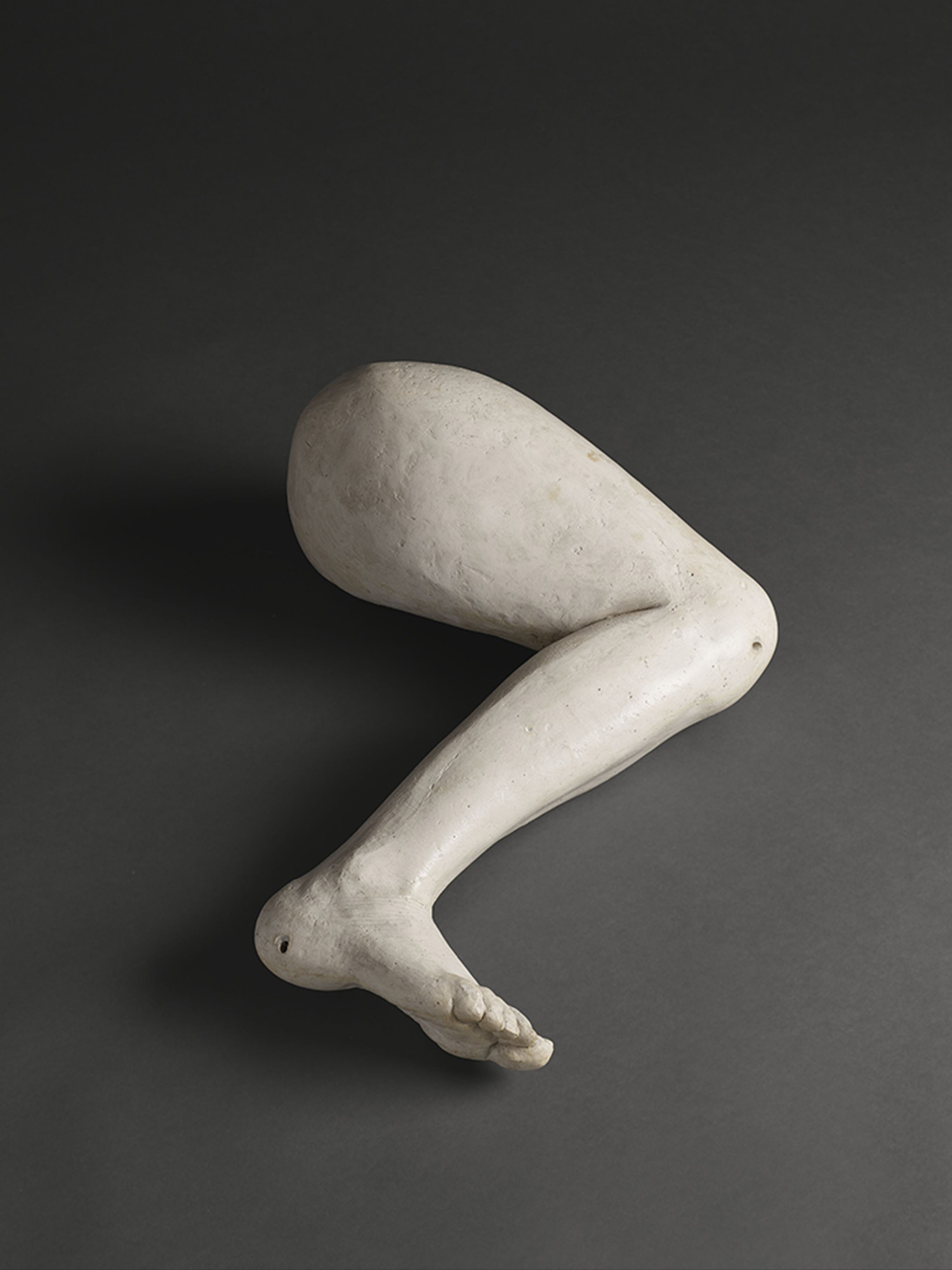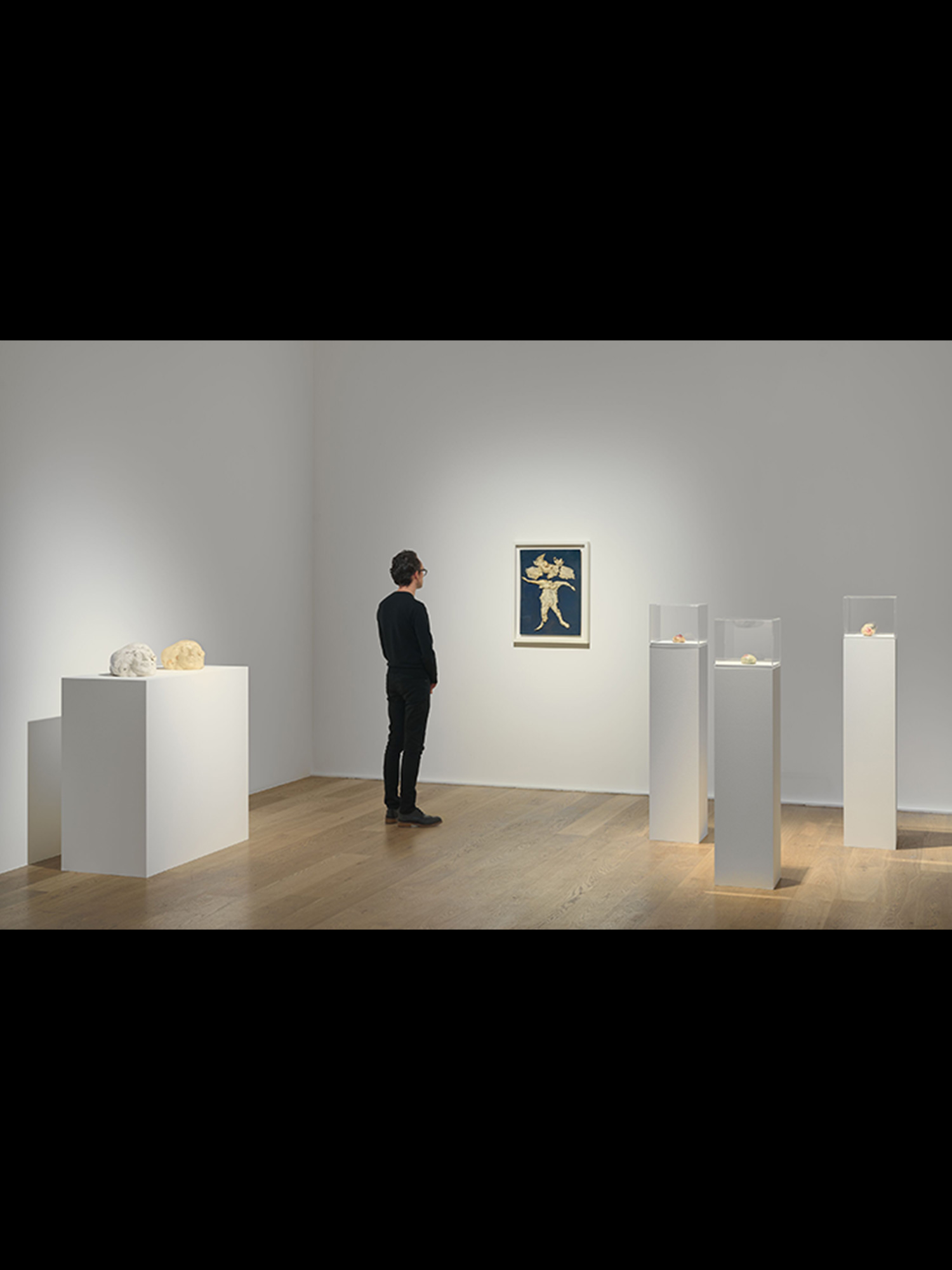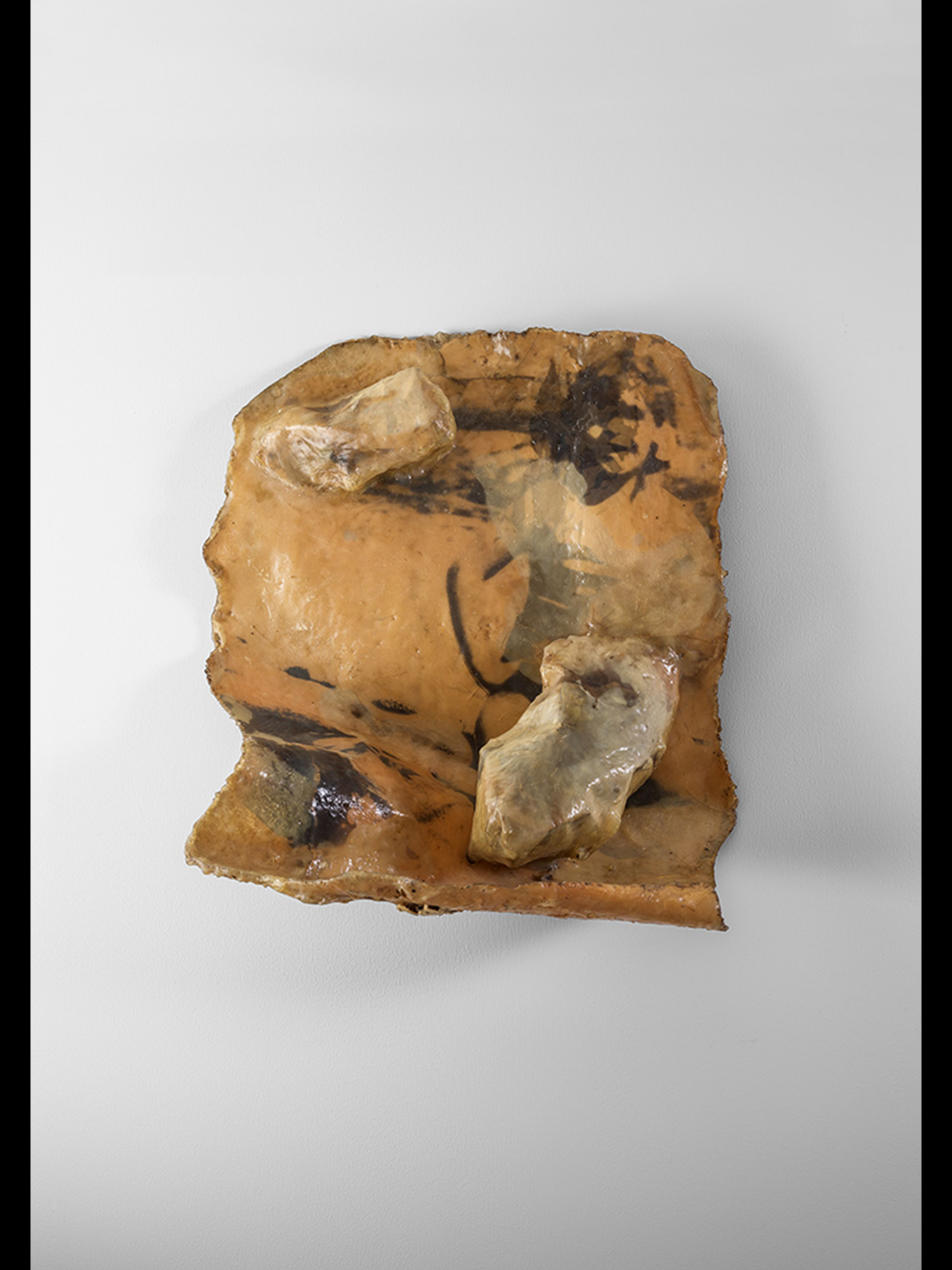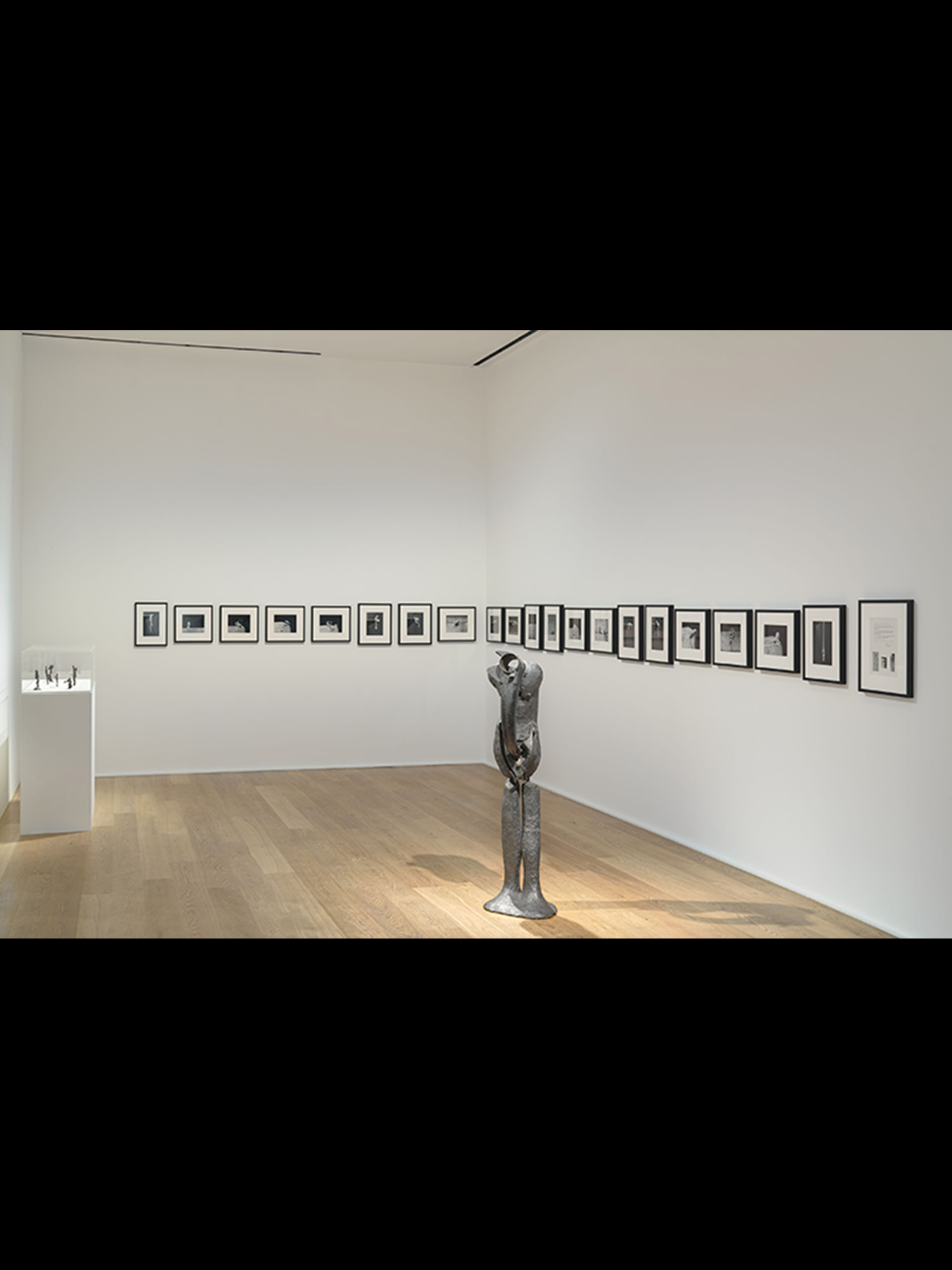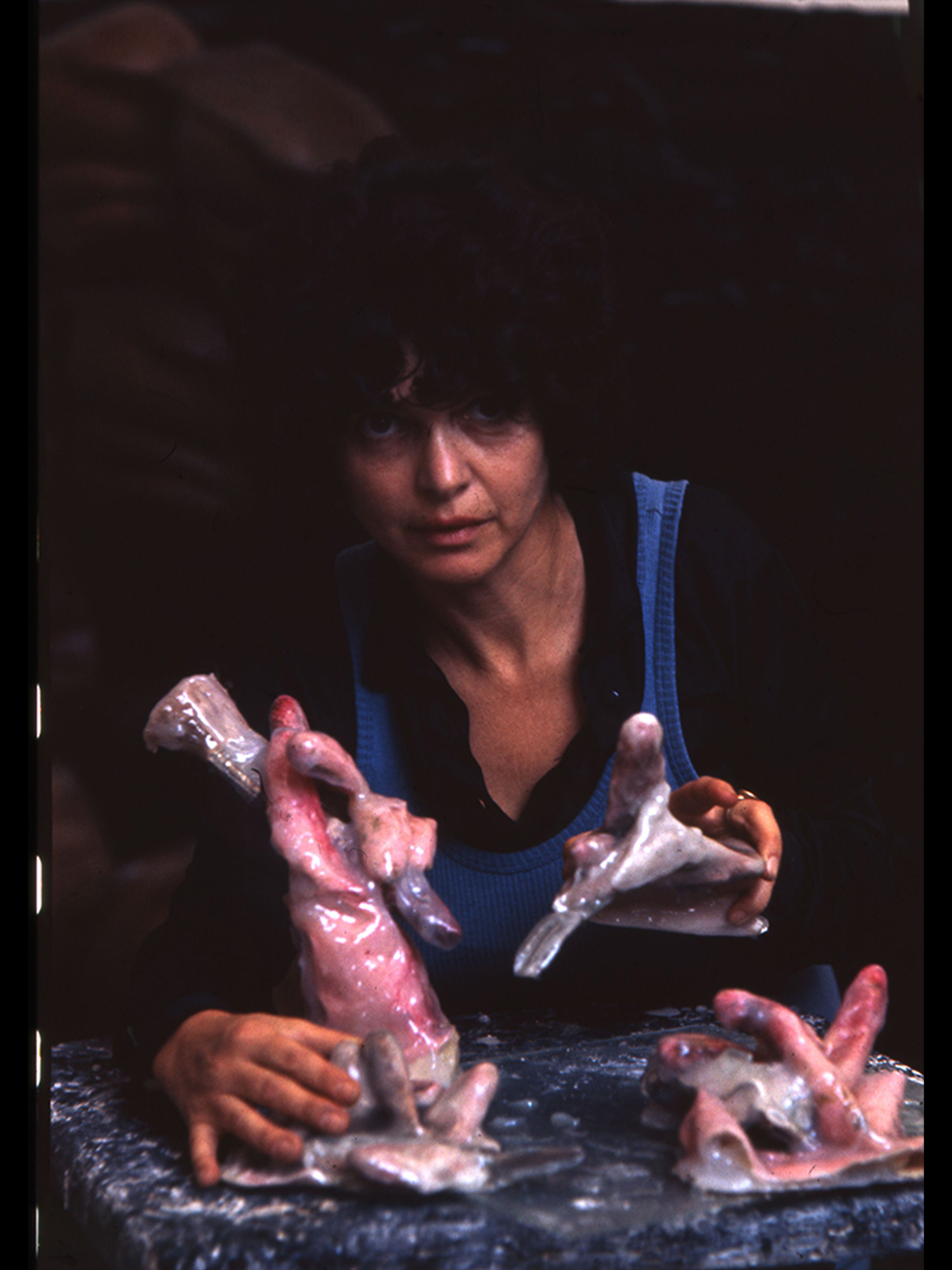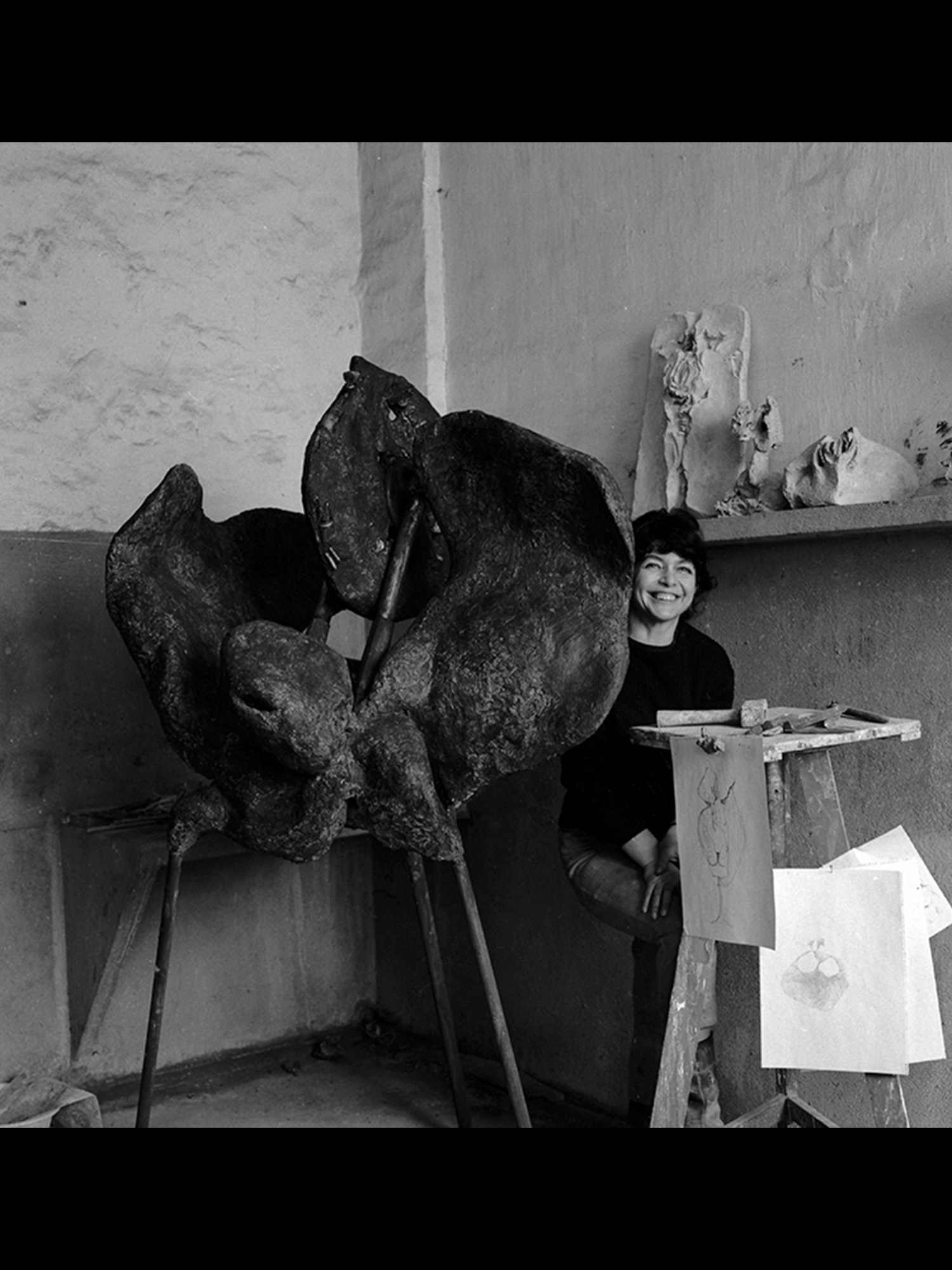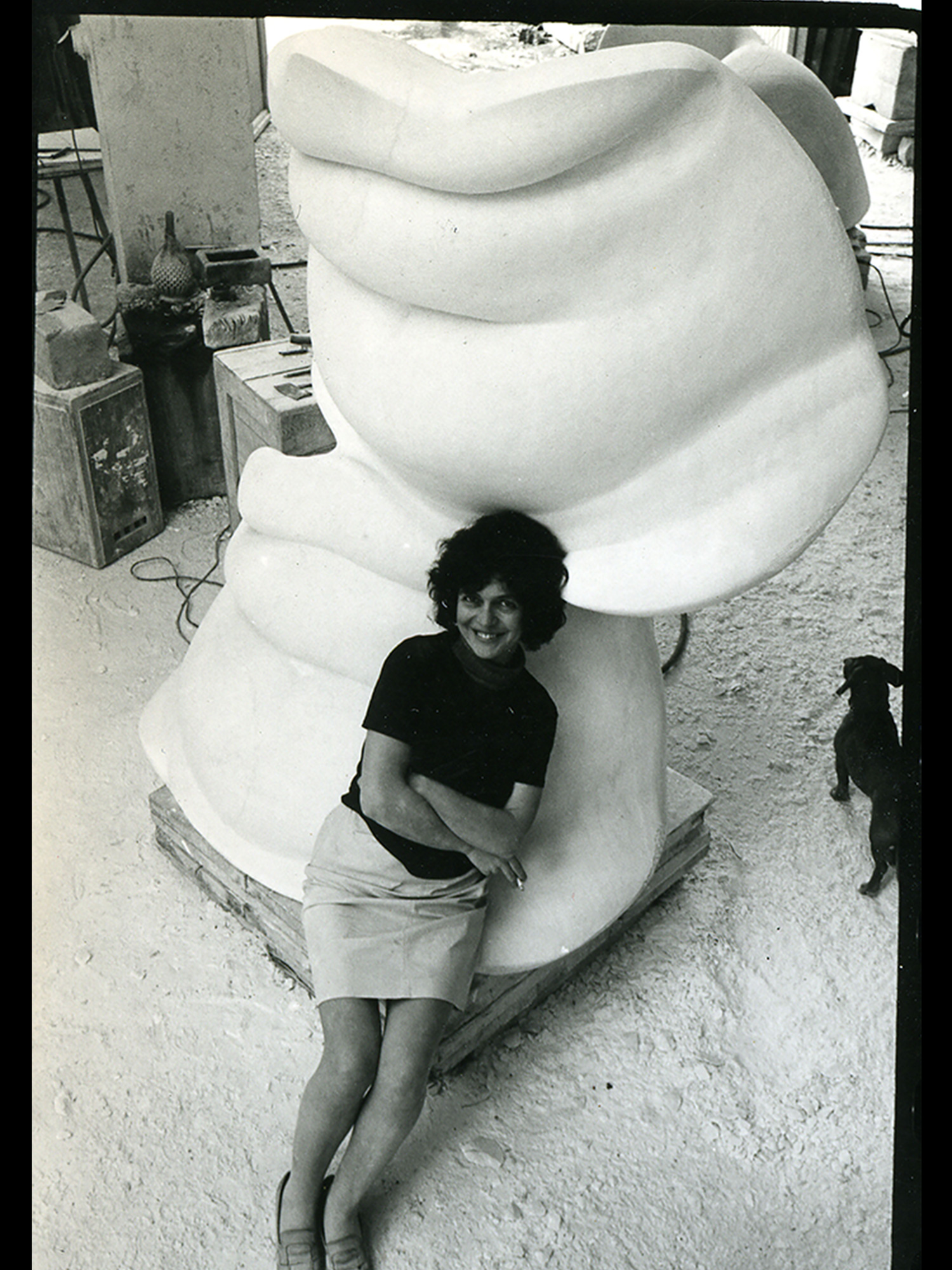Trained as a classical sculptor, in 1963 Szapocznikow began using new industrial materials in her work, including poured polyurethane and polyester resin. The results both distinguished her practice as singular and innovative while also allowing influences from surrealism and pop art to emerge, having lived through both movements while they were at their peak. Her most famous of these works, a series of functional, illuminated lamp sculptures, can be seen in the second and final room of the exhibition. Spindly stalks shoot upwards and bloom into luminous, vibrantly coloured lips and nipples. In one, titled Deser IV (Dessert IV), 1971, coloured resin is scooped into a glass dessert bowl like ice cream; a rather solemn looking orange mouth looming absurdly over this gooey landscape like a surrealist sunset.
Yet while Szapocznikow’s practice was certainly in dialogue with the artistic discourse of her time, she was no solitary artist, she incorporated these discussions into her own very personal visual lexicon. In Pamiątka I, Souvenir I, 1971, from her ‘Souvenirs’ series, a black-and-white image of herself as a smiling young girl hovers above the corpse of a concentration camp victim. These memories, years apart, are suspended together in thick layers of resin. Here, the plastic sheen of pop becomes the sticky substrate of the subconscious, flattening all of one’s accumulated life experiences together into one, ever-present memory. This is the unconscious petrified in resin.
In works made after her breast-cancer diagnosis, both Szapocznikow’s bodily fragments and her memories themselves seem to mutate like rogue cells. In Tumeur, Tumor, 1970, from her ‘Tumors’1series, another black-and-white photograph of the artist sleeping is bundled up, along with the soft imprint of her lips, in a resin-gauze membrane like just another body cell. This equivalence feels important. Szapocznikow’s sculpture is an index of her subconscious memory through her bodily imprints. She shows us that survival is being able to live with so many harrowing subconscious incompatibilities; of the notion that life continues on after living as a Jew in German-occupied Poland; that one can live through the swinging sixties after the horrors of Bergen-Belsen. That survival is about situating oneself in the emotional aftermath of an event as much as it is simply making it out alive. Perhaps true catharsis is being able to leave oneself in pieces.





